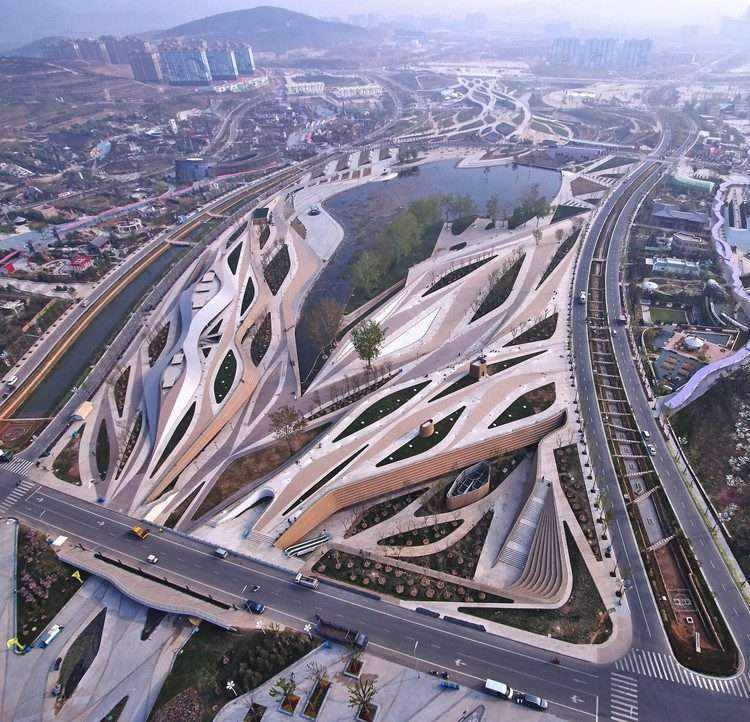Stairway House / Bang Keun YOU







Site: A plot of land standing on the mountainside 520m above sea level and encircled by several layers of plots, similar to terraced rice fields. From there, you can appreciate a full 360° view of the surrounding landscapes. On the southern side, the South Sea is about 50 km away; on the northern side, the mountain with the stone retaining walls (built with local rocks) and a dense forest cover the western side. The road leads steeply to the top, then descends again, passes through new houses sites, and ends at a dead-end downhill road.




Space: The clients, a modest couple, had no specific requirements toward design functionality; they were, by the way, totally open-minded. In such a case, I created a whole day scenario based on the human movements inside and outside and detached it from the land’s physical conditions. That finally led to an ambiguous form. Being in nature, the form should be simple, and the materials should appear as if they have long coexisted with the surrounding elements. The simple form of square bars enables a certain linear functionality. As the plot of land was not extensive, the bars were curved into the ground like sponges. The curved sections of the square bar become a pathway (staircase) connecting the second floor as a folding fan. The curved parts are raised to create a frame for the main entrance.

On the eastern side, walls are removed, allowing the morning sunlight to flood the sleeping areas. The continuous linear space transitions into a second-floor bedroom, living room, and dining room and then concludes at the guest room on the upper part of the dining room without walls. The balconies from the bedrooms, the terraces from the living room, and the terraces from the guest room materialize the movements between the inside and the outside. Also, the skylights and light openings, which create variations in light, change according to the interconnected relationships between each space, seasonally and over time, enriching and adding depth to the narrow and long yet simple interior space.



Materiality: The solid stone retaining wall in the background profoundly impacts the house’s square masses; the same DNA of the stone wall was transplanted into the house envelope. Initially, the stone retaining wall patterns are standardized to compose the entire façade. The small interstices of the stone retaining wall are replaced with glass blocks, giving birth to subtle light openings and reducing the weighty perception of the structure. The stone retaining wall’s rough texture peels away the square masses’ outer shell, creating uniformity while evoking a light terracotta color to enhance the mise-en-scène. This effort also aims to establish a genetic homogeneity between the surrounding landscape visible from the ground and the newly formed square masses.





![6 Best Polyurethane for Floors [Reviewed & Buyer’s Guide]](https://archup.net/wp-content/uploads/2023/03/6-Best-Polyurethane-for-Floors-Reviewed-Buyers-Guide.jpg)